Norway – It’s so expensive!
So many people tell us that they are worried about travelling to Norway because of the prices; of food, tolls, ferries, alcohol – the list goes on. And then there’s the journey to consider and the miles you need to travel to get there and getting around this vast country. In our All Things Norway blog trilogy, we hope to allay some of those fears and share how we managed to tour Norway for 7 weeks effortlessly, finding ways to manage our budget, shop savvy and not blow the bank!
Our first in the series All Things Norway, we focused on the travel elements of getting to and moving around Norway with ease using their ferries, tolls and motorway network. In this second blog we provide you with a guide on all things shopping; offering practical advice on Stocking Up strategies, Top tips on How to shop Savvy and offer you a downloadable PDF document of all the food we bought whilst we were in Norway so you have a clear idea on our costs… and much much more. For simplicity, we have built a Table of Contents so you can skip around the blog at your leisure and all links are highlighted in red. So let’s get into the nitty gritty.
Currency
The first few things to say about your shopping experience in Norway is to be prepared for a cashless society. In fact Scandinavia as a whole prefer payment by cards than cash. So we don’t recommend you bring much with you. Obviously it depends on the length of time you are here, although we had £100 worth of Norwegian Krone (NOK) and rarely had the need to dip into our stash.
The only time we required some loose change was for washing machines and a couple of Marina style Aires where you place your money in an honesty box. Otherwise we used our card everywhere, even for the smallest amount.
We used a free to download app from xe.com to do our Norway Krone conversion, although we got used to doing the sums in our head once we had the formula. Obviously the rate may differ when you go, although we worked on the basis of moving the decimal place one point to the left and shaving a bit off. Not very sophisticated although it gave us a good enough picture.
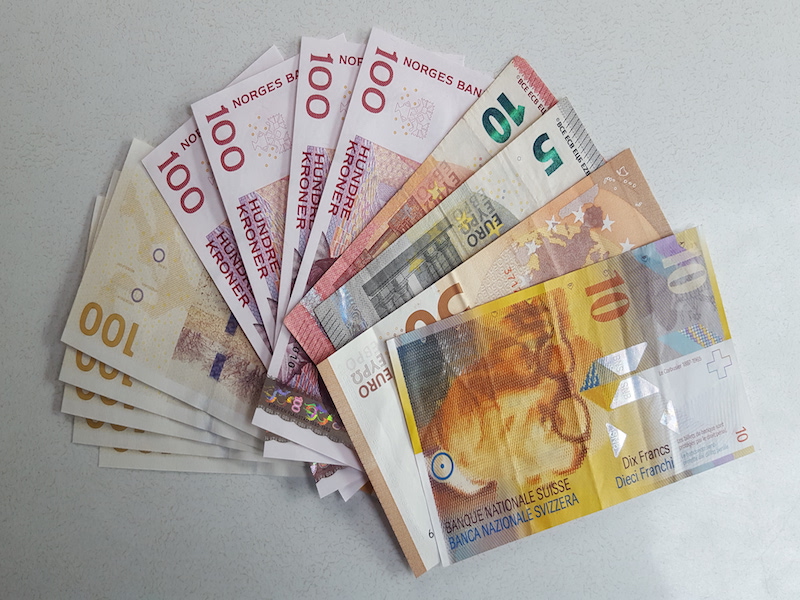
Shopping for Food
Of course, for most of us, thinking about this Norwegian beauty, food is high on the agenda, as reports come back about the extortionate cost of living. And it is undoubtedly more costly, although not quite as bad as we thought. We were glad to have done some stocking up, although it wasn’t quite as necessary as we feared. Here’s our Shopping for Food experiences – with no holds barred.
Stocking up before you arrive
Everyone does it. Everyone recommends you do it! We’ve read reports from others about how they carried huge amounts of tins and stock items to make sure they didn’t go hungry. And of course, without the benefit of hindsight – we too did the same.
Whilst back in UK for our MOT I felt like a woman possessed; writing lists of what to buy and what I could cook without having to go near a Norwegian supermarket. It must have looked as if I was planning an expedition to the North Pole. Every time I visited Tescos (other supermarkets are available) I would stock up on just a few more things. And if we’re honest our shopping frenzy began when we left Spain in March as we grabbed the all essential boxes of wine and bottles of Soberano.
With a box, no wait – it was more like a crate of goodies in the garage, our cupboards bulging and the freezer rammed, and I really do mean rammed, we can honestly look back and giggle at our shopping exploits. And perish the thought that we should touch that precious frozen treasure before we reached Norway. Bless him, Myles didn’t even have room for ice! I even decided to master bread baking; coming prepared with yeast, bread flour and a great home-made recipe. What was I thinking! I even remember saying on the last packet of divine Cheesy Doodles from Sweden, ‘That’s it, no more snacks until we leave Norway.’ Our Norwegian philosophy was, we’ll dry out and loose weight because our eating and drinking habits would surely have to change!
There seemed to be a never ending ‘just one last shop’ as we passed Intermarché in France, Lidl in Germany and even Rema 1000 in Kiruna, northern Sweden. I’m sure if someone was looking down us they must have thought us mad! Although in our defence – the prices man! Surely they were going to break us.
Well I am pleased to say that we neither lost weight nor dried out because it wasn’t anywhere near as costly as we thought it would be. Our End of the World stock piling was not necessary. Norway can be mastered, enjoyed and survived without the need to buy up supermarket shelves of supplies. I say this out of experience and the examination of all the food we had left over. There’s at least five main meals I had planned for, that are, as we sit in Czechia, still lurking in my cupboards. And whilst we can use these items up another time as they’re not perishable, my Stocking Up Strategy was way off course!
So here are my Top 20 essentials to buy before you leave home either because they are hard to get or because they are expensive. Of course the caveat here is that these are food items that we used a lot in our cooking so they may not appeal to your tastes and of course it also depends how long you are visiting for. For recipes for cooking whilst on the road check out our free to download Camping Cuisine Cookbook. Our larder items listed in here are the basis for my pre-Norway stock-piling!
Top 20 List of Pre-Norway Food Essentials
- Your favourite herbs – just because of the translation.
- Salad cream – difficult to find this.
- Wine, beer and Sprits.
- Meats if you are a meat lover – we brought lamb mince as this is notoriously hard to get throughout Europe. We also brought chicken livers for pâté and risotto, and chicken breasts as they are VERY expensive in Norway. Also we piled up on bacon and sausages.
- Pistachios (they’re hard to get in Norway).
- Honey and sugar – this they are a lot more expensive.
- Butter – definitely cheaper at home.
- Coffee and tea bags.
- Cartons of legumes & pulses (they are light and easy to store) and bulk out meals nicely.
- Tomato/Brown sauce and Mayonnaise.
- Dried sachets of coconut milk (easier to store)
- Tubes of pureed condiments such as ginger, lemongrass, chilli
- Tuna/pilchards/sardines – make great lunches.
- Emergency, long-life milk.
- Condiments such as Balsamic Vinegar, Olive Oil, Soy Sauce, Sweet Chilli Sauce and Hoi Sin.
- Tins of vegetables as emergencies because fresh veg are more expensive.
- Flour/Cornflour.
- Risotto rice/Basmati.
- English Mustard/Worcester sauce/Bovril/Marmite – definitely couldn’t find Bovril anywhere!
- Cheese. Hard cheese is particularly difficult to get, although you can buy grated packets.
The bottom line is though, don’t panic – you don’t need to bring as much as you think. Norway’s supermarkets are without doubt more expensive, although think Waitrose rather than Lidl prices. We were pleasantly surprised about how shopping in Norway did not break the bank and we had loads of supplies left over. So don’t weight down your van with unnecessaries. To give you more confidence, read on as I give you a summary of our shopping list sharing all the things we actually bought whilst we were there, so you can see for yourself.
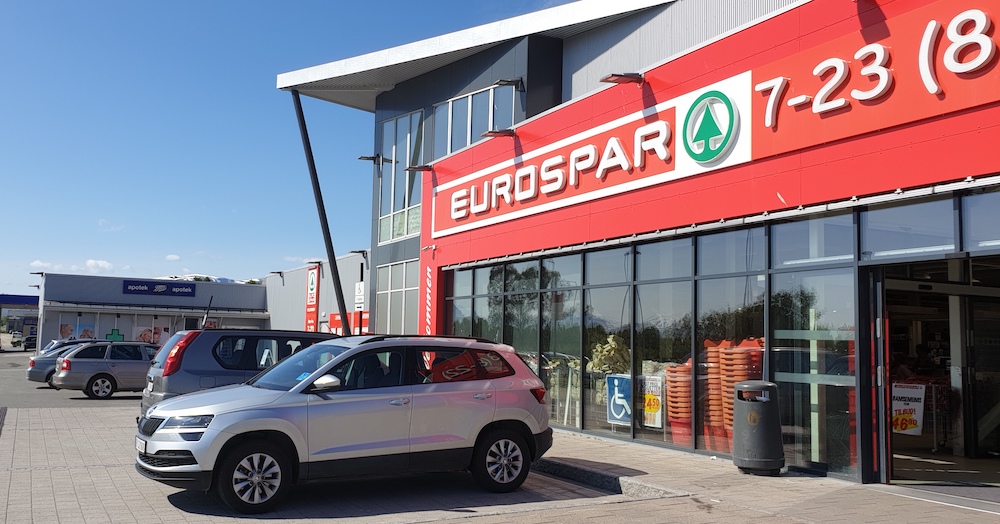
Supermarkets in Norway
So after my obsessive stock piling behaviour, our first flirtation with Norway’s supermarkets was in a small village on Norway’s second largest island, Senja. We came out armed with 6 items £30 lighter, still in shock at the experience we’d just had. Blimey that was a sting in our pocket. So glad I stocked up!
And yet, of course prices are always going to be more expensive in off-the-beaten-track places. It’s no different in UK or, come to think of it, the rest of Europe. So this was pretty much a one-off experience – thank goodness – until Myles bought beer. I’ll tell you about that cock up in a bit.
Another Norway surprise was the range of items that you could buy from their supermarkets. Norway’s shops have an outstanding range of foods, unlike many of its European cousins. Chinese, Indian, Mexican – you name it, they had it. So this is why we recommend not bringing too much with you.
Here’s a list of the shops we found most often and our experiences when shopping here. Bear in mind there is no Lidl or Aldi here.
Rema 1000 – is classed as a discount store, although we found it much more expensive in comparison to others. They have a Discount Scheme which you can apply for via an app. You then show a code from your phone when you shop there. The man on the kiosk did, however, scan a card for me so that the discount could apply. And after finding EuroSpar, we didn’t ever return to Rema.
EuroSpar – Totally my favourite shop. My favourite because it had plenty of discounts, every week and a brand called First Price – more on that in a moment. This was bar far our most cost-effective shopping experience.
Kiwi – we had been told that this was the best and cheapest supermarket to visit, although testing the theory out, we have to say that it was no cheaper, in our opinion than Eurospar.
Joker – this is a small convenience store that you would visit if you were desperate for something and miles away from a big town. Which can often happen as you are travelling through Norway’s fjords. We didn’t go in one, so can’t comment on their prices.
BunnPris – this was a medium priced store as is Coop Prix.
Shopping Savvy
On a day to day basis Norway’s shops have everything you need. Whilst Norway is a Waitrose-type of shopping experience, there are deals to be had. I became really good at hunting out good prices and saving some serious pennies. These are my Top 10 Tips.
Top Top 10 Tips for being a Savvy Shopping
- EuroSpar is our top supermarket recommendation for all round value for money and super discounts.
- Look out for the phrase TILBUD, which means offers. We found lots of offers on meat. So we were able to buy chicken mince and thighs for £2.99. Also vegetables were often on special deals. We bought cauliflower and broccoli for £1 during the entire length of our stay.
- When you see meat discounts, bulk buy and freeze if you are able to. Although this does come with a warning. In Sweden mostly, although we also had the problem in Norway, chicken does seem to go off very quickly, even when frozen and well within date. So be mindful of this.
- Always look for the FIRST PRICE brand. EuroSpar was excellent at stocking these although many of the Coop and Kiwi stores had them too. First Price is the equivalent of Tescos Value and offer food at low prices and have loads of £1 deals. I managed to buy chocolate (which is also generally expensive) on a special deal of £1.
- Fish was surprisingly good value, relatively speaking. I bought Mackerel fillets for £1 every time I shopped. I added mayonnaise or creme fraiche with horseradish for a really quick smoked mackerel pate. Also a tub of prawns, if they are your thing, were no more expensive than the UK at £4.99, so they were a bit of a treat.
- Bread is expensive and white particularly difficult to buy for some reason. Although if you shop early, First Price did a whole, uncut white loaf for 80p. You then use the automated slicing machine and hey presto you have yourself some white bread.
- Cornflakes are only £1 if you get the First Price brand. Milk isn’t overly expensive, so breakfasts are covered. Make sure you buy MELK – it comes in a pink carton – be careful you don’t end up with fermented yoghurt instead.
- Vegetables and fruit are definitely more expensive, although when there’s a fruit or veg in season, they offer it at a special price. So I was regularly able to get a punnet of nectarines for £2.99, cauliflower and broccoli for £1. So that pleased the nutritionalist in me. Otherwise when vegetables were scarce, then I used my selection of tinned veg. Not as good of course although my philosophy is ‘Better than…’ Also after arriving in Norway, we were finally able to start eating our frozen supplies which made room to buy frozen peas.
- If you, like me, need a herbal remedy or organic shop then, although not cheap, you can find Health Food Shops in the Shopping Malls in larger towns.
- If you choose to shop in Rema 1000, then download their app for discounts when in store.
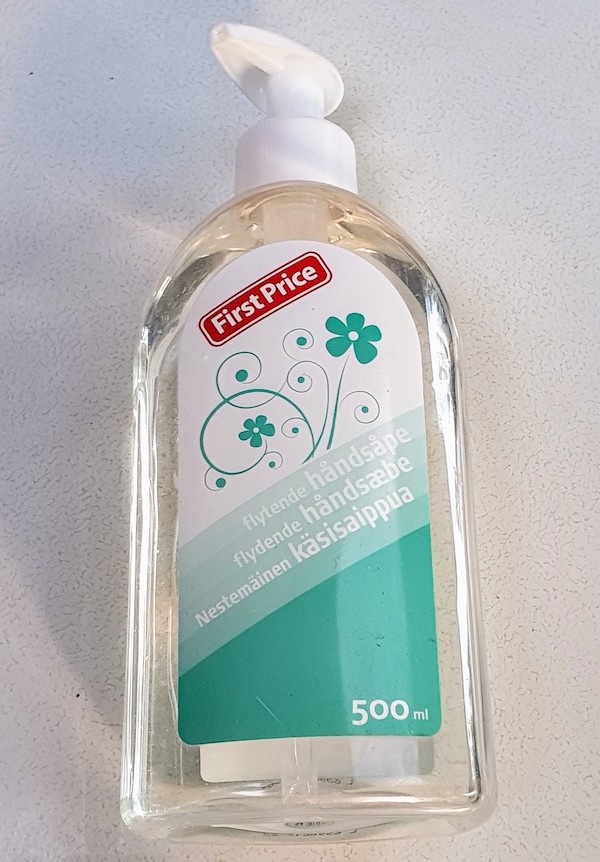
The Motoroamers’ Food Shopping Prices
We took the opportunity to record our shopping lists and expenses so you can see a real time summary of certain foods that we purchased during our 7 weeks and how much each item cost us. We have created this as a PDF document that you can download as your personal copy. Click the button below.
Going Out
You can safely assume that given the general cost of living in Norway that eating out brings the same price tag. And it is true for us across Scandinavia as a whole, that whilst we may well have been able to shop savvy, going out for meals meant there was no avoiding the cost. And as a result we didn’t do it often. In fact during the whole four months we had four ‘out’ moments. A couple were just simple lunches, a round of beers in Tromsø and a very super Fish and Chip meal from Kristiansund for £24.
Otherwise we decided that to eat out, on what would be likely London prices, was beyond our budget. We enjoy cooking our own food, so going out didn’t really feel necessary. If you do enter into restaurants, check your prices before you go using an app like xe.com, avoid cities where prices are always inflated or simply keep it to a lunch. This way you avoid breaking the bank and getting stung with high prices.
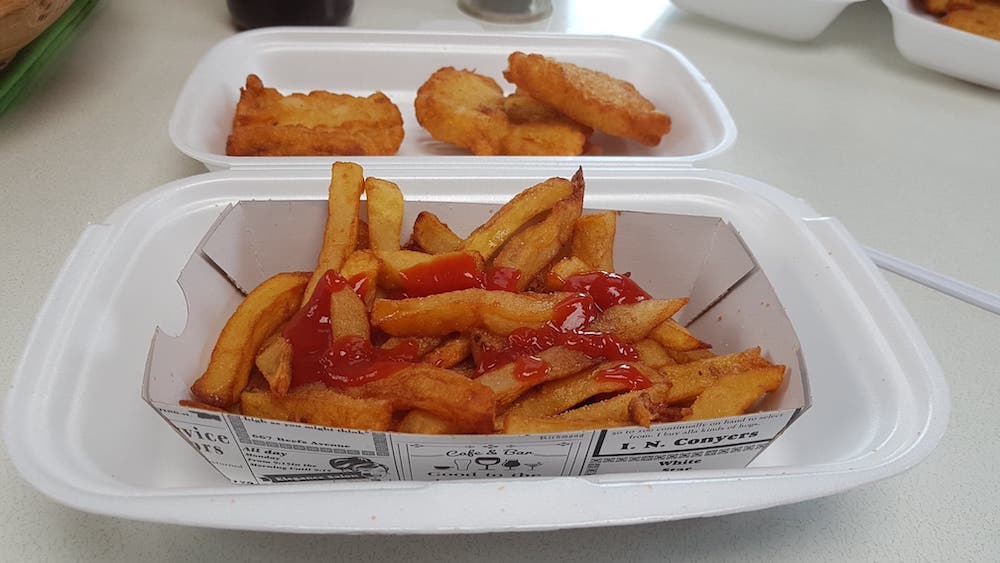
Norway’s Alcohol
Let’s get down to the nuts and bolts. Norway’s booze is outrageously expensive. And whilst supermarkets will stock low percent beers – spirits and strong beers above 4.75% can only be purchased in separate Government run stores called Vinmonopolet. You can buy these low percentage supermarket beers until 8pm on weekdays and 6pm on Saturday.
And let me tell you, we talk from experience. I made the mistake of letting Myles come in shopping with me, because he wanted some beers. To quote Julia Roberts from the film Pretty Woman “Big mistake. Big. Huge.”
Unlike me, who takes time to look at prices and buy good value, Myles was just focused on ‘I want beer!’ And he got it – for the princely sum of £60! Perhaps that doesn’t sound too bad – although when I then add that this was only for 16 cans of sub-standard strength larger, then you’ll understand my shock. Needless to say, he never came shopping with me again!
Alcohol is heavily taxed and is part of Norway’s attempt to curb a drinking culture and alcoholism, although according to locals, it’s not working. A contentious subject obviously.
So if you like a drink, then you need to bring supplies with you. Although as a word of caution, if you sail into Norway in your motorhome from Denmark, then we hear it on good authority that Customs are hot on searching. It has been described to me as ‘strip-searching’ motorhomes, looking for excessive stores of booze that exceed the Duty Free allowance. So be warned.
We entered in the north of the country where there were no border checks. Although I suspect with a large majority of visitors entering into Kristiansand, Bergen, Larvik and Stavanger, they concentrate their efforts here.
Buying Diesel/LPG
As we mentioned in the first of our All Things Norway series, there is a definite strategy when it comes to diesel buying. Interestingly we found the cost cheaper than in Sweden, which really surprised us.
Our Top Tips for Diesel buying are:
- Shop on a Sunday when prices are much cheaper.
- Buy when you see diesel cheap (anything below 14.00NOK), as within an hour it can rise in price.
- Don’t be alarmed if you see a greater price on your credit card bill than your receipt. This is a holding amount taken by most stations in Scandinavia, which once the amount is no longer pending, a refund of the remaining amount is given to you.
- Most stations are self-service
- LPG is not sold in garages. They are at separate units in industrial areas of large towns. Use mylpg.eu to check locations.
- Buy LPG before you need it as although there are frequent stations, the miles to travel to them are often deceptively long.
Entrance Frees and Attractions
So much of what makes Norway unique is the ‘outdoors’ and is therefore free. So going into museums, unless this is, of course your thing, isn’t totally necessary to your cultural experience. I recognise that I offer this statement as non-museum fans although we have been known to nip into the odd one along the way if it is value for money.
Although one of the great things about Norway is that most of the car parks were free. So visiting the sights, for example on the Trollstiegen Pass and Geiranger were all free. Visiting the outdoor WW2 museum at Bud on the west coast, free. Driving the 18 Scenic roads, free bar one – The Atlantic Coastal Way has a toll fee payable.
That said there are some activities that are worthy of your pennies, depending on what you love. For me I love wildlife so I did indulge in one Sea Safari, which was a real highlight for me. Here’s a list of other things we did.
- Sea Safaris to see Puffins, Whales and Sea Eagles is a popular trip from many spots around the northern coast particularly. We had a Rib trip for an evening of puffin watching on the island of Andoya. It is the biggest colony of puffins in the whole of Europe and it was worth every single penny of our 495NOK per person. It was a bucket list for me so up there in terms of value. For more information, you can click here.
- Svartisen Glacier Hikes. Along the Scenic Route Fv17 is Norway’s second largest glacier, Svartisan. An arm of this magnificent glacier is Engabreen and of Norway’s 2,500 glaciers, is one of the most accessible. It can also be seen from the road and is one of the best examples of a glacier almost reaching the sea in northern Europe. There are a couple of hiking options all of which requires a short ferry boat across Holandsfjorden. This cost us 200NOK per person return for the 15 minute journey. You can hire bicycles for 80NOK for 3 hours or take your own on the ferry for no additional cost. You can access the glacier from end of May to end of September.
- Hiking Norway’s largest glacier Jostedal – You can hike up close to the glacier directly from the campsite, which costs 250NOK per night. Alternatively you can take the tourist train up the mountain, which costs 115NOK one way and 230NOK return per adult.
So as you can see by their absence, entrance fees do not need to be a major spending concern because so much of your Norwegian experience will be enjoying the outdoors and this is totally free to man and beast.
Campsites and Services
With Norway’s Freedom to Roam policy camping in the most magnificent of places is just so easy. Waking to the sound of the fjord lapping against the shore and pods of dolphins gently gliding through the water. It’s quite a magical experience.
Although not everyone likes wild camping, as they prefer the security and facilities that campsites offer. We didn’t use many campsites in our 7 weeks, in fact just three. Partly to do washing and meet up with some friends. Although in terms of costs, we travelled in July and August and given it was high season, we spent an average of 250NOK per night excluding electricity, which we didn’t think was too bad. Our campsite in Tromsø was 400NOK including electricity, so a bit more like the prices of other UK and European sites at this time of year, although we stayed out of necessity rather than choice.
We didn’t find that many campsites along our journey so I think some planning and plotting might be appropriate. Especially on the Lofoten Islands we found ‘sites’ really needed to be put in inverted commas. They tended to be parcels of land that some entrepreneur had decided to open up to campervans and tents and charge 250NOK for the privilege with portaloo facilities. If you would like more information on the Lofoten Islands for free, click here.
DIY Emergencies
Whilst we hope it doesn’t happen, life on the road can mean technical issues. So rest assured if you have the need for anything for your vehicle, then help is at hand with BILTEMA. This is a fabulous DIY shop that sells everything that you can imagine. Everything household, vehicle and bicycle – you name it, they will have it! Oh except Bicycle Rack covers. Ours is still hanging on by a thread.
Total Costs
So to be complete, it feels important to share our total spend during our 7 weeks in Norway. So combining all our expenses here are our figures, based on an exchange rate of £1 = 11.34NOK.
| Spending | Price in £ | Comments |
| Food | £620 | This doesn’t include items from my ‘stock piling’, purchased during regular weekly shops. Gestimate an additional £200. |
| Diesel | £518 | This is based on covering approximately 3,000 miles from our entry at Abisko to our exit at Seläter. |
| LPG | £82 | |
| Ferries | £409 | Based on 8 ferries taken, 6 of which were discounted by 50% with our Autopass Discount Card. |
| Tolls | £88 | We have yet to receive any bills from EPC, so this is based on my own notes |
| Campsites and laundry | £140 | 5 nights at £26 |
| Activities/Entertainment | £94.00 | Puffin Safari, car parks and entrance fees |
| Eating Out/Beers | £35.00 | Fish and Chips and Beers in Tromso |
Total Spend £1,984 |
||
Conclusions
So ladies and gents – there we have it. All things Shopping. We hope that this transparent review of the money we spent and, more importantly, how we managed to shop savvy will help you manage your trip to Norway
We were pleasantly surprised by Norway’s cost of living and whilst it was definitely one of the more expensive countries we’ve visited, in retrospect I think France, Switzerland and Italy are nipping at Norway’s heels. We wouldn’t hesitate returning knowing how manageable spending can be.
If this blog raises any unanswered questions on the spending front, then do get in touch. For example all things ferries, tolls and routes are presented in our All things Travel blog, which you can read here. Our next blog in the series is focused on our highlights, our route map and things to see whilst travelling this extraordinary country.
Pin it to save for later




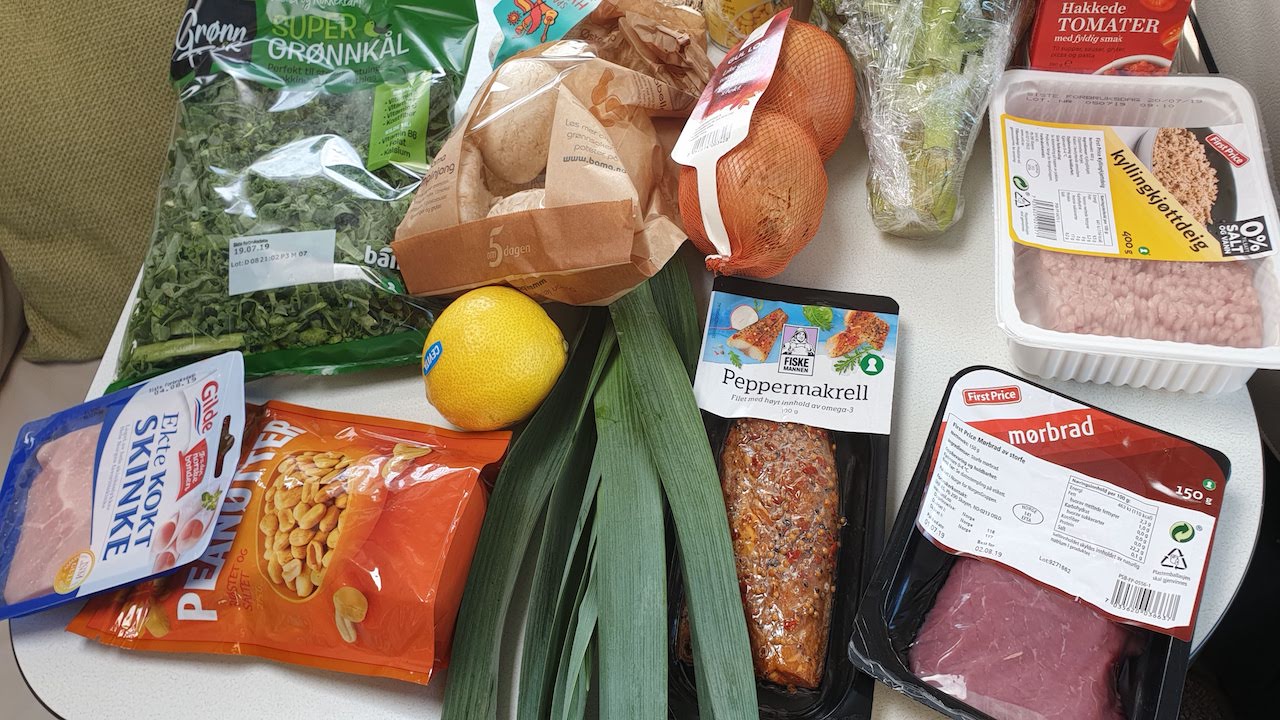

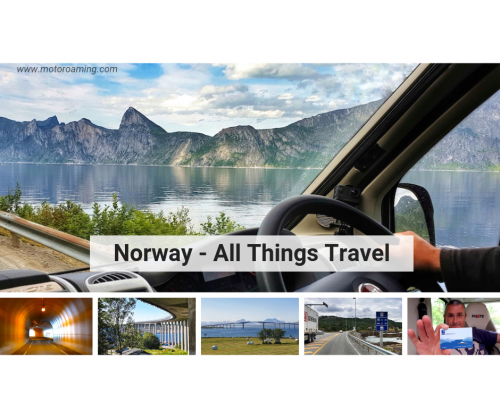
Oh dear think Im tired I read Trolls instead of tolls. do they have trolls? Oh my Im loving your blog xx
Hi Bree, legend has it that TROLLs are everywhere in Norway. There’s lots of tolls too! Kx
I am a bit embarrest to say that I have never been to Norway, wich is a shame, since I love in Sweden 😛
Something to rectify soon then Ann! LOL. Kx
I knew Norway was expensive, but this is a brilliant way to make a trip there affordable! Thank you for sharing these fantastic tips.
You’re welcome we are glad that they are useful. Kx
I love this list, so thorough and well thought out. Thanks so much for taking the time to share this.
I also remembered that we paid €2 per kilo for mushrooms in season (October) which we thought was reasonable and made lots of mushroom soup.
Hi Ruth, thank you. I think buying local and seasonal is key to shopping anywhere, although yes especially in Norway. Good shout. Kx
Would love to go to Norway. This is a very informative blog, but with our ZAR being such a weak currency, it will probably still be expensive for us. Still, I can dream…
Absolutely Alma, dreams come a size too big so we can grow into them. Kx